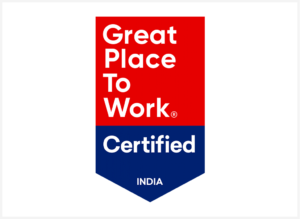Today, Jul 27, marks my another work anniversary in the HR function, and the anniversary of my first day at Profoundis—later acquired by FullContact, Inc. I am trying to reflect on some great people matters our leadership and HR teams are proud to have envisaged and implemented over the last few years, besides the usual HR business stuff. Not in order of occurrence, though. The credit goes to our awesome leadership and HR teams across offices of FullContact 🙂
What led us to these decisions/benefits
FullContact takes decisions based on the Core Values it is built on. Our people decisions are mostly based on treating people as independent adults and believing in an accountability-driven organisation than a task-driven organisation. Leaders of our organisation have shown immaculate allegiance to these two principles while making people decisions. What if it goes wrong has always been part of the decision-making process, but has not been the deciding factor that prevented us from doing something right.

FullContact India got recognised as a Great Place to Work®
Within 2.5 years of beginning its operations, in 2019, the FullContact India office was recognised as Great Place to Work Certified®. This reflected how our members felt about the organisation as a great place to be at, how our processes aligned to benchmarks that the GPTW team set. We were one of the very few SME IT organisations, back then, to achieve GPTW certification back then in Kerala.
Ask No Payslip Policy
In 2021, FullContact India decided that we would NO LONGER ask for the CURRENT SALARY information, or PAYSLIPS of any candidates. We would just ask them their expected salary, and no documents violating the candidate’s financial privacy would be collected.

Travel Benefits
FullContact used to offer travel benefits (then called PAID Paid Vacation) that offers both two weeks of paid leave just for travel and a sum of Rs. 1,50,000/- per year to take an actual vacation. Later this was revamped to be called FULLBalance Vacation Benefit with UNLIMITED paid vacation time and a sum up to Rs. 2,15,000/- per year to take the vacation. At the latest, I recently took a trip to Turkey and Azerbaijan, thanks to this policy.
Holidays
FullContact has an unparalleled holiday and leave policy in India among the IT SME organisations of our nature. As I write this, FullContact India employees enjoy double the national average per year as holidays—27 in total in a year. This includes 13 scheduled holidays as per norms in the Holidays Act, ½ Day Fridays during Jul-Sep, and year-end holidays from Dec 26-31. As part of our ½ Day Fridays policy, all the Fridays from Jul 1—Sep 2 are half-day Fridays, meaning we close our work by noon on Fridays and take an early weekend to spend more time with ourselves and our beloved ones.

An extended Leave Policy
FullContact has always tried to maintain a top-notch leave policy. Apart from the typical Sick/Casual/Earned/Maternity/Miscarriage/Abortion/Adoption/Sterilisation leaves, FullContact India also offers:
- Unlimited Hospitalisation paid leave, for as long as the employees remain in a hospital; this is not to be availed from sick leave or any other bucket
- Paternity paid leave for 21 days
- Bereavement paid leave for 14 days
- Family First paid leave for 3 days to spend time with family for any reason (e.g: celebrating birthdays, anniversaries, just spending time, etc.)
No-leave-approval process
Effective Jan 1, 2022, FullContact India moved from Leave Approvals to Leave Acknowledgements. This means, our paid leave requests are auto-approved and only an acknowledgement will be sent to the reporting managers as FYI. There’s no approval process if Earned Leaves and Casual Leaves are applied for at least 5 calendar days in advance. All Sick, Covid, Hospitalisation leaves, and Bereavement and other sickness/illness-related leaves are auto-approved without any notice requirement.
Unlimited VTO
FullContact, besides our leave policy and holidays, offers UNLIMITED Paid vacation time off for all our members. Our members are able to take any number of days as vacation, besides all the short-term statutory leaves and holidays! We have a formal policy to encourage members to take a MINIMUM of three weeks of vacation per year. The new Unlimited Vacation policy takes care of the other end of the benefit, making it practically and technically unlimited.

Our Benefits
Our awesome list of benefits includes but is not limited to:
- Health Insurance for family and parents fully paid for by FullContact
- Accidental Insurance fully paid for by FullContact
- Life Insurance fully paid for by FullContact
- Employee Access Program fully paid for by FullContact
- Equipment reimbursement for people of determination
- ESOPs
- FULLBalance Vacation Bonus
- Monthly work-from-home reimbursement
- Home office setup cost reimbursement
- ThankFULL Rewards and Recognition Program
- SkillFULL Employee Training Program
- SuccessFULL Career Pathing Program
- And we are default work remote 🙂
First among the few to close down physical offices when the pandemic hit
I included this in the list since I am proud of the leadership team that unanimously decided to shut down our physical office space until things get back to normal (phew, it took two years for it to be normal) when Covid 19 hit. We were one of the first few offices to go remote—and we went fully remote, permanently so later—when the pandemic hit. Our flexible work policy dueing pre-Covid era that empowered our members to work from home did help us in making this transition with ease.
The guiding light for decision-making was of course the safety and wellbeing of our members. We were also one among the first very few SME IT orgs in the state who incorporated a home office setup cost reimbursement upto Rs. 7500/- which was later increased to Rs. 10,000/-. We also offered (and continue to offer an increased amount of) Rs. 1000/- per month toward home expenses such as the internet charges.
Unparalleled Covid 19 Benefits
Our organisation, like many others, took the decision to stand by our members during the tough times of Covid 19. We released a stream of Covid Benefits for our members and their families. It included sponsoring covid vaccinations for members, spouse, kids, parents and parents-in-law and our members appreciated this benefit.
We also declared 4-day work week in the month of May 2021 for our members to get more time with family and friends during those tough times.
Other Covid 19 benefits included 14 days of paid time off if a member is Covid positive, Covid insurance for all employees if not already covered by the organisation’s group health insurance, employee access program to provide mental support and counselling sessions free of cost—for members and their families, 7 days of paid time off as Caregiver PTO to take care of a family member in case of being Covid positive, two days of additional paid leave for vaccination, salary advance for members affected by Covid, reimbursement of Covid tests, and continuation of salary for six more months in case of an unfortunate Covid death. We also ran the #HealthyFullContact initiative and also put together some Mental Health and Wellness Ideas that our members found useful.

An Inclusive workplace
Developing an inclusive, equitable and diverse workplace has always been one of our prime agendas—though this is a work-in-progress. Our DEI teams across both offices set SMART Goals and work toward making them a reality. This is a picture that our team treasures and gender inclusivity of this magnitude is something that we enjoy having at FullContact. We also offer reimbursement of the cost of equipment used by our members who are people of determination, up to 7500/- in a year.
Compensation Structure with Flexi Benefit Plans
FullContact introduced Flexi Benefit plans to make sure that our employees get to decide, to an extent, how their compensation should be structured. We made sure that we do not inflate CTC for the sake of making it bigger by including components like medical insurance premiums, gratuity, variable bonus, ESOPs, etc. in the CTC—the philosophy was to keep it simple for the employees and prospective employees to give an idea about a fixed compensation.
Also published on LinkedIn and Medium.






